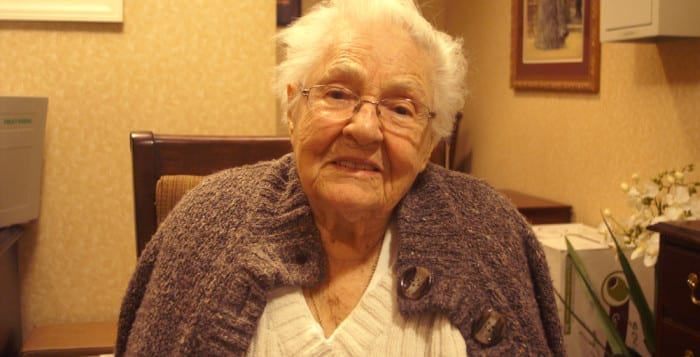Gluten has been gaining in notoriety over the last several years. When we hear someone mention a gluten-free diet, several things tend to come to mind. One may be that this is a healthy diet. Along the same lines, we may think gluten is bad for us. However, gluten-free is not necessarily synonymous with healthy. There are many beneficial products containing gluten.
We might think that gluten-free diets are a fad, like low-fat or low-carb diets. Still, we keep hearing how more people feel better without gluten. Could this be a placebo effect? What is myth and what is reality in terms of gluten? In this article I will try to distill what we know about gluten and gluten-free diets, who may benefit and who may not.
But first, what is gluten? Most people I ask don’t know the answer, which is OK; it is part of the reason I am writing the article. Gluten is a plant protein found mainly in wheat, rye and barley.
Now to answer the question of whether going gluten-free is a fad. The answer is resounding “No,” since we know that patients who suffer from celiac disease, an autoimmune disease, benefit tremendously when gluten is removed.(1) In fact, it is the main treatment.
But what about people who don’t have celiac disease? There seems to be a spectrum of physiological reaction to gluten, from intolerance to gluten (sensitivity) to gluten tolerance (insensitivity). Obviously, celiac disease is the extreme of intolerance, but even these patients may be asymptomatic. Then, there is nonceliac gluten sensitivity, referring to those in the middle portion of the spectrum.(2) The prevalence of NCGS is half that of celiac disease, according to the NHANES data from 2009-2010.(3) However, many disagree with this assessment, indicating that it is much more prevalent and that its incidence is likely to rise.(4) The term was not even coined until 2011.
What is the difference between full-blown celiac disease and gluten sensitivity? They both may have intestinal symptoms, such as bloating, gas, cramping and diarrhea, as well as extraintestinal (outside the gut) symptoms, including gait ataxia (gait disturbance), malaise, fatigue and attention deficit disorder.(5) Surprisingly, they both may have the same results with serological (blood) tests, which may be positive or negative. The first line of testing includes antigliadin antibodies and tissue transglutaminase. These measure a reaction to gluten; however, they don’t have to be positive to have reaction to gluten. HLA–DQ phenotype testing is the second line of testing and tends to be more specific for celiac disease.
What is unique to celiac disease is a histological change in the small intestine, with atrophy of the villi (small fingerlike projections) contributing to gut permeability, what might be called “leaky gut.” Biopsy of the small intestine is the most definitive way to diagnose celiac disease.
Though the research has mainly focused on celiac disease, there is some evidence that shows NCGS has potential validity, especially in irritable bowel syndrome.
Before we look at the studies, what does it mean when a food says it’s “gluten-free”? Well, the FDA has recently weighed in by passing regulation that requires all gluten-free foods to have no more than 20 parts per million of gluten.(6) The agency has given food manufacturers a year to comply with the new standards. Now, let’s look at the evidence.
Irritable bowel syndrome
Irritable bowel syndrome (IBS) is a nebulous disease diagnosed through exclusion, and the treatments are not obvious. That is why the results from a randomized controlled trial, the gold standard of studies, showing that a gluten-free diet significantly improved symptoms in IBS patients, is so important.(7) Patients were given a muffin and bread on a daily basis.
Of course, one group was given gluten-free products and the other given products with gluten, though the texture and taste were identical. In six weeks, many of those who were gluten-free saw the pain associated with bloating and gas mostly resolve; significant improvement in stool composition, such that they were not suffering from diarrhea; and their fatigue diminished. In fact, in one week, those in the gluten group were in substantially more discomfort than those in the gluten-free group. There were 34 patients involved in this study.
As part of a well-written March 4, 2013 editorial in Medscape, by David Johnson, M.D., a professor of gastroenterology at Eastern Virginia Medical School, he questions whether this beneficial effect from the IBS trial was due to gluten withdrawal or to withdrawal of fermentable sugars because of the elimination of some grains, themselves.(8) In other words, gluten may be just one part of the picture. He believes that nonceliac gluten sensitivity is a valid concern.
Autism
Autism is a very difficult disease to quantify, diagnose and treat. Some have suggested gluten may play a role. Unfortunately, in a study with children who had autism spectrum disorder and who were undergoing intensive behavioral therapy, removing both gluten and casein, a protein found in dairy, had no positive impact on activity or sleep patterns.(9) These results were disappointing. However, this was a very small study involving 22 preschool children. Removing gluten may not be a panacea for all ailments.
Antibiotics
The microbiome in the gut may play a pivotal role as to whether a person develops celiac disease. In an observational study using data from the Swedish Prescribed Drug Register, results indicate that those who were given antibiotics within the last year had a 40 percent greater chance of developing celiac disease and a 90 percent greater risk of developing inflammation in the gut.(10) The researchers believe that this has to do with dysbyosis, a misbalance in the microbiota, or flora, of the gastrointestinal tract. It is interesting that celiac disease may be propagated by change in bacteria in the gut from the use of antibiotics.
Not everyone will benefit from a gluten-free diet. In fact, most of us will not. Ultimately, people who may benefit from this type of diet are those patients who have celiac disease and those who have symptomatic gluten sensitivity. Also patients who have positive serological tests, including tissue transglutaminase or antigliadin antibodies are good candidates for gluten-free diets.
There is a downside to a gluten-free diet: potential development of macronutrient and micronutrient deficiencies. Therefore, it would be wise to ask your doctor before starting gluten withdrawal. The research in patients with gluten sensitivity is relatively recent, and most gluten research has to do with celiac disease. Hopefully, we will see intriguing studies in the near future, since gluten-free products have grown to a $4 billion industry that the FDA now has begun to regulate.
References:
(1) Am J Gastroenterol. 2013;108:656-676. (2) Gut 2013;62:43–52. (3) Scand J Gastroenterol. (4) Neurogastroenterol Motil. 2013 Nov;25(11):864-71. (5) medscape.com. (6) fda.gov. (7) Am J Gastroenterol. 2011; 106(3):508-14. (8) medscape.com. (9) 9th annual AIM for Autism Research 2010; abstract 140.007. (10) BMC Gastroenterol. 2013:13(109).
Dr. Dunaief is a speaker, author and local lifestyle medicine physician focusing on the integration of medicine, nutrition, fitness and stress management. For further information, go to the website medicalcompassmd.com or consult your personal physician.









